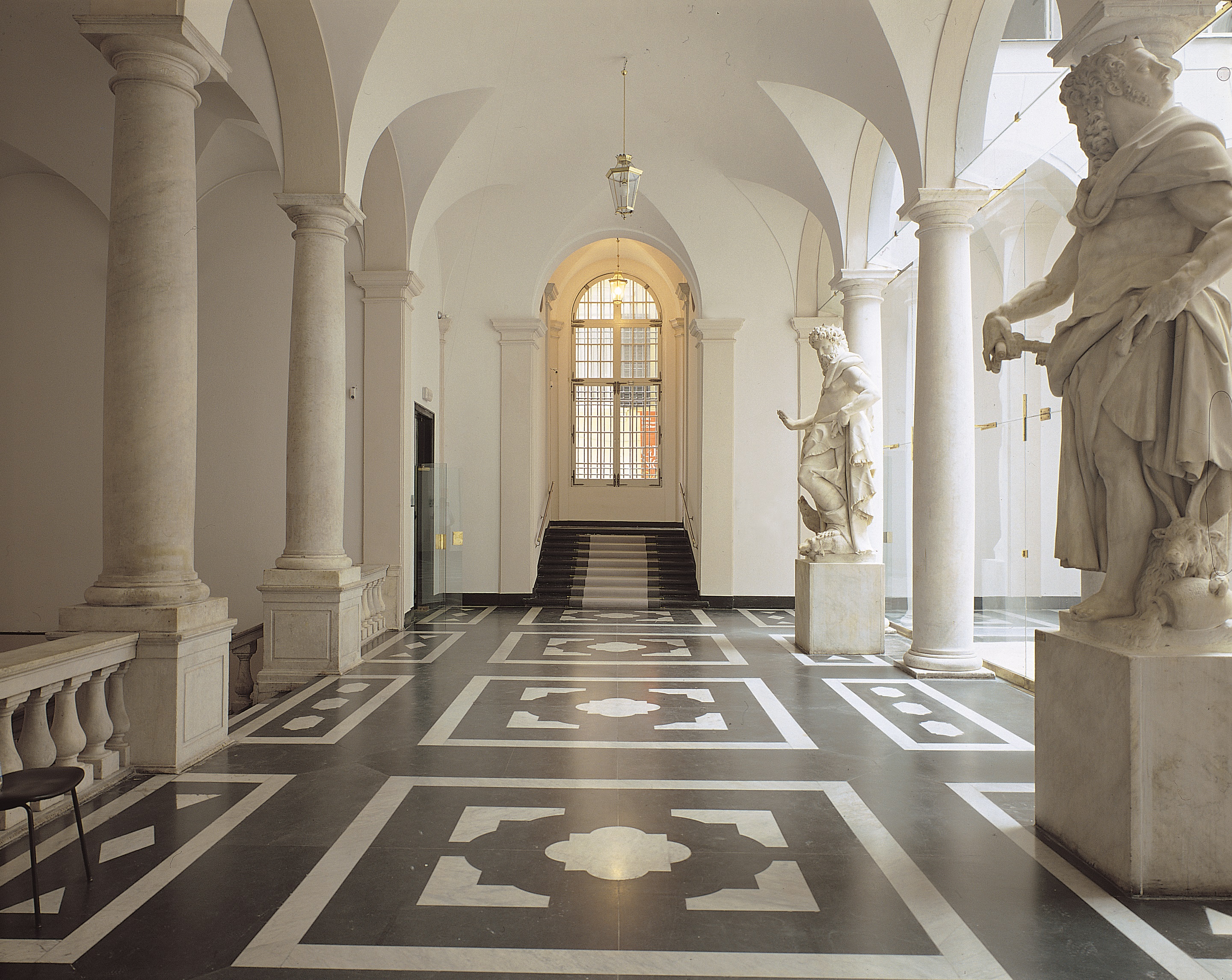
Click here to view image

Click here to view image

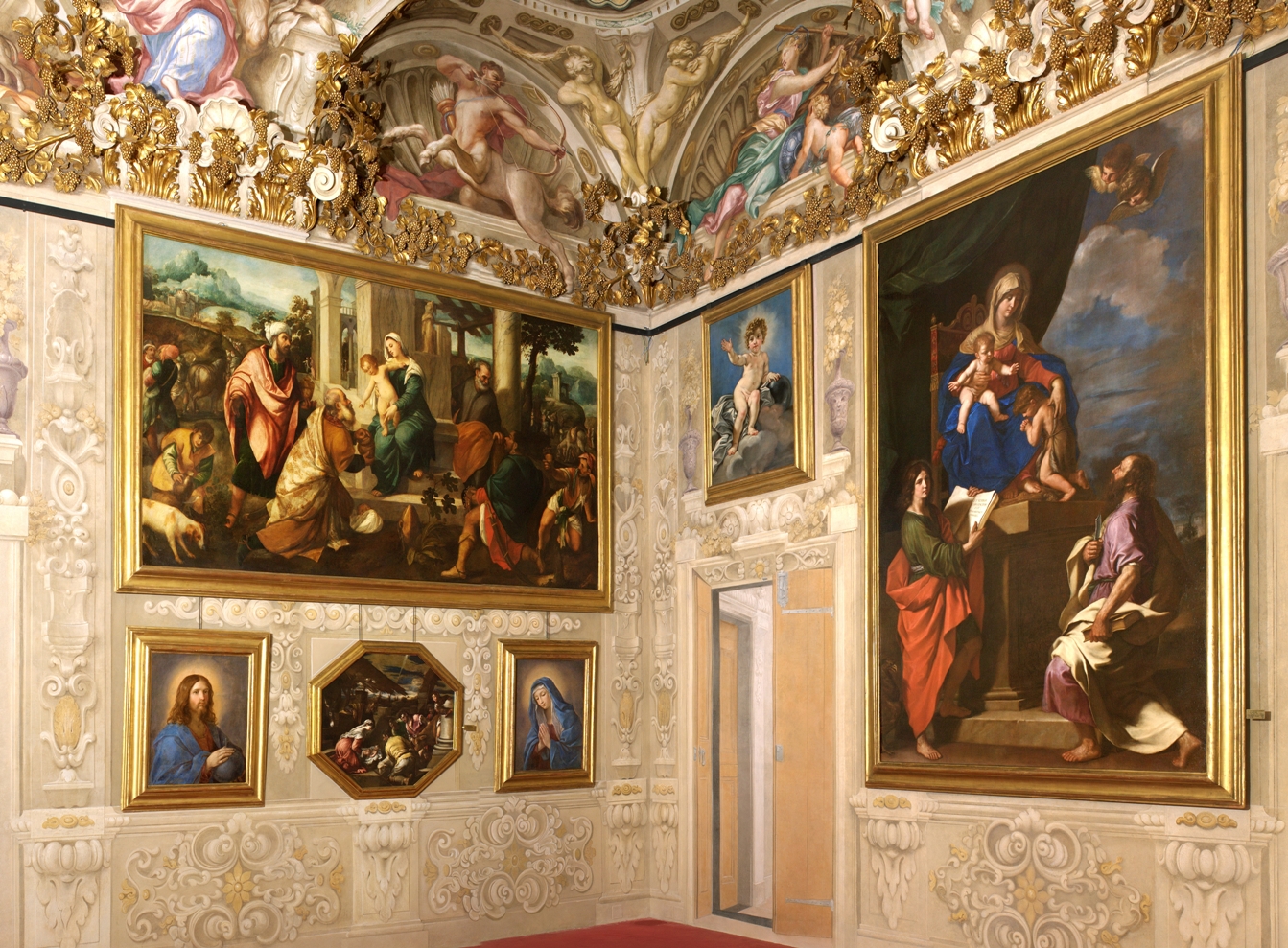
Click here to view image
Sala dell'Autunno
Sala Autunno-foto Visconti 2012

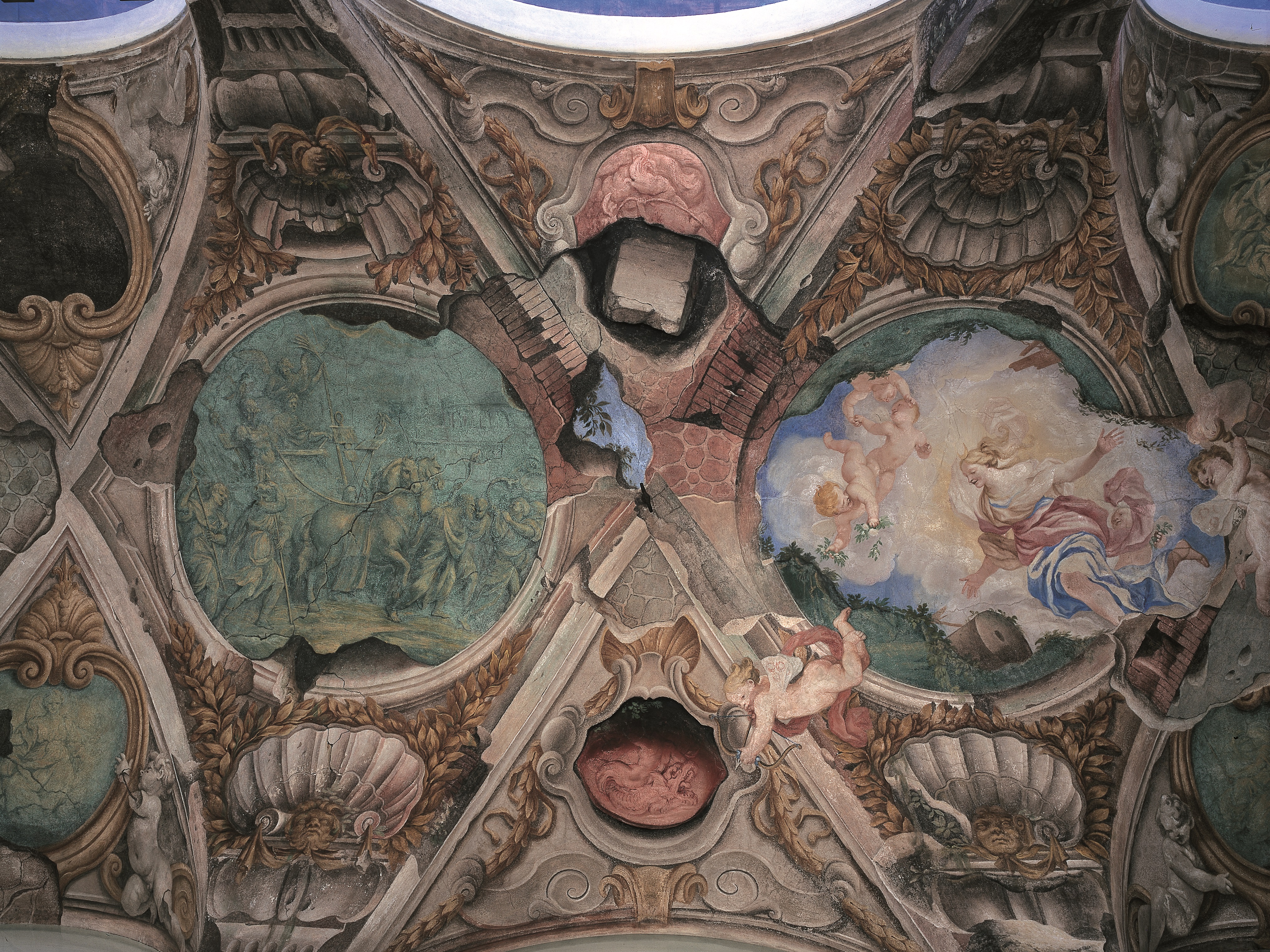
Click here to view image

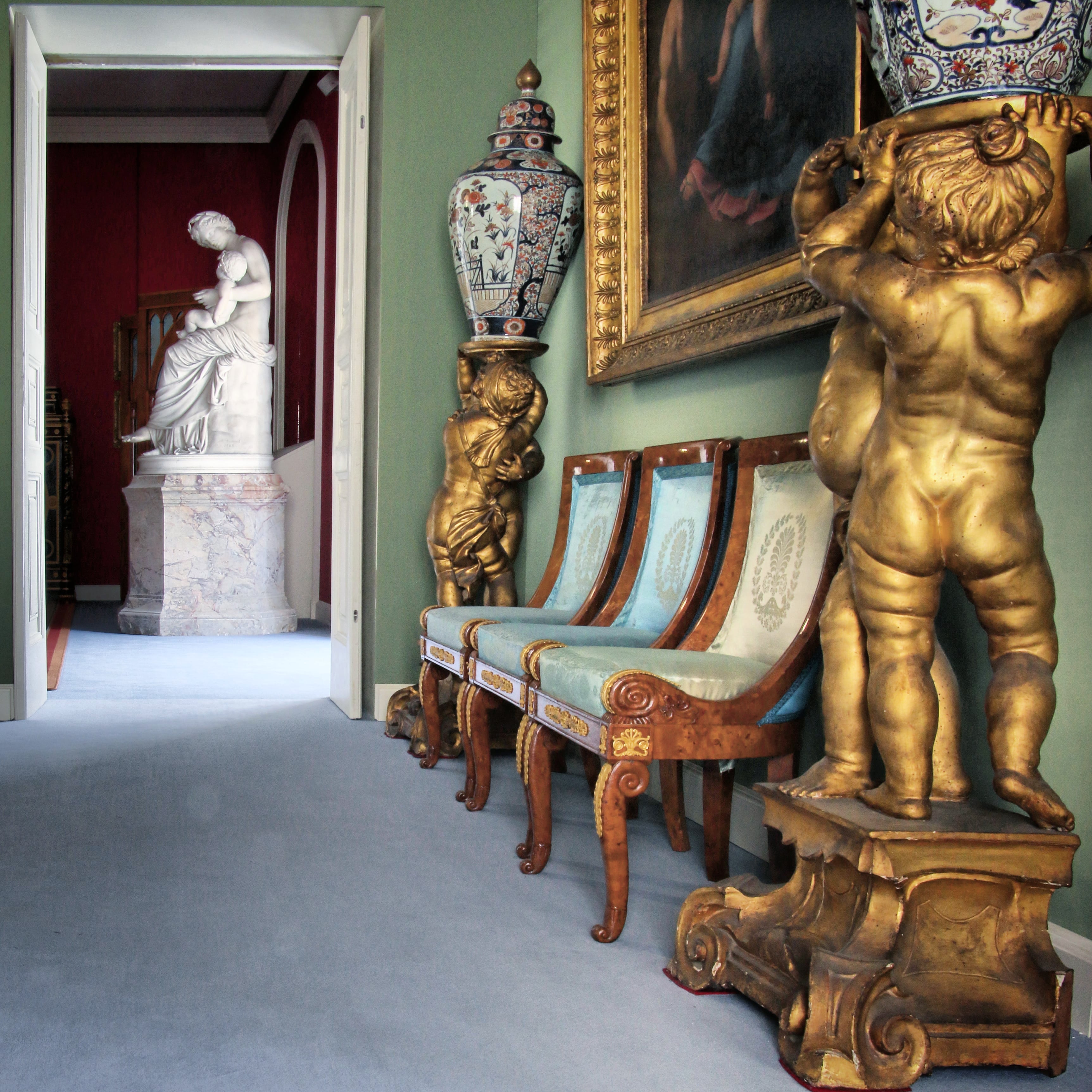
Click here to view image

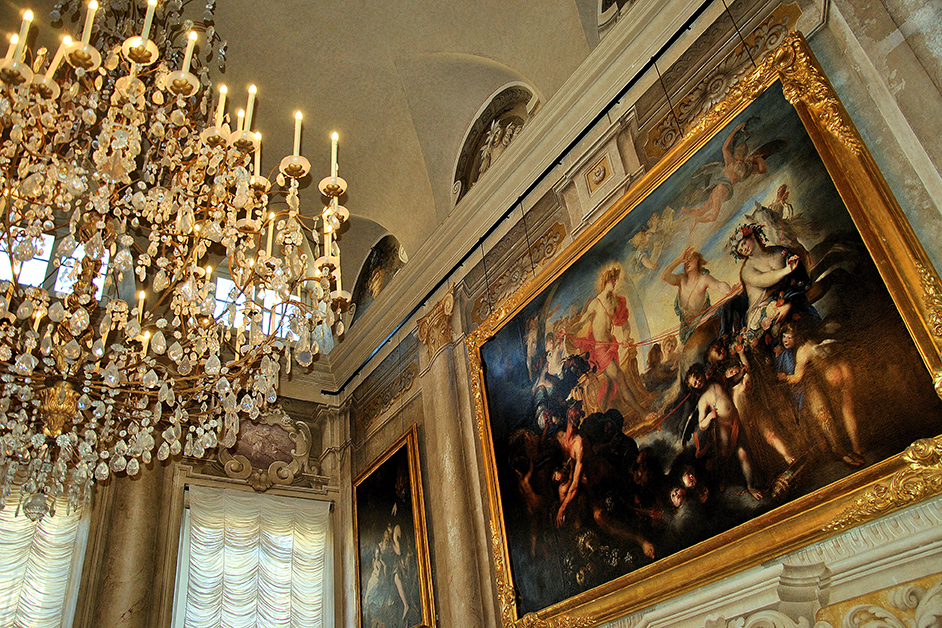
Click here to view image

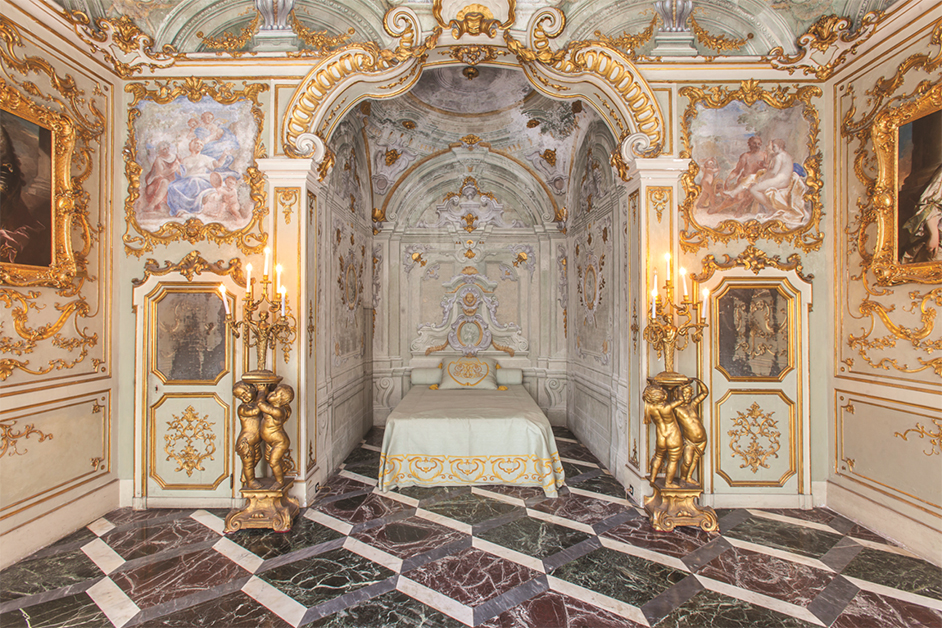
Click here to view image

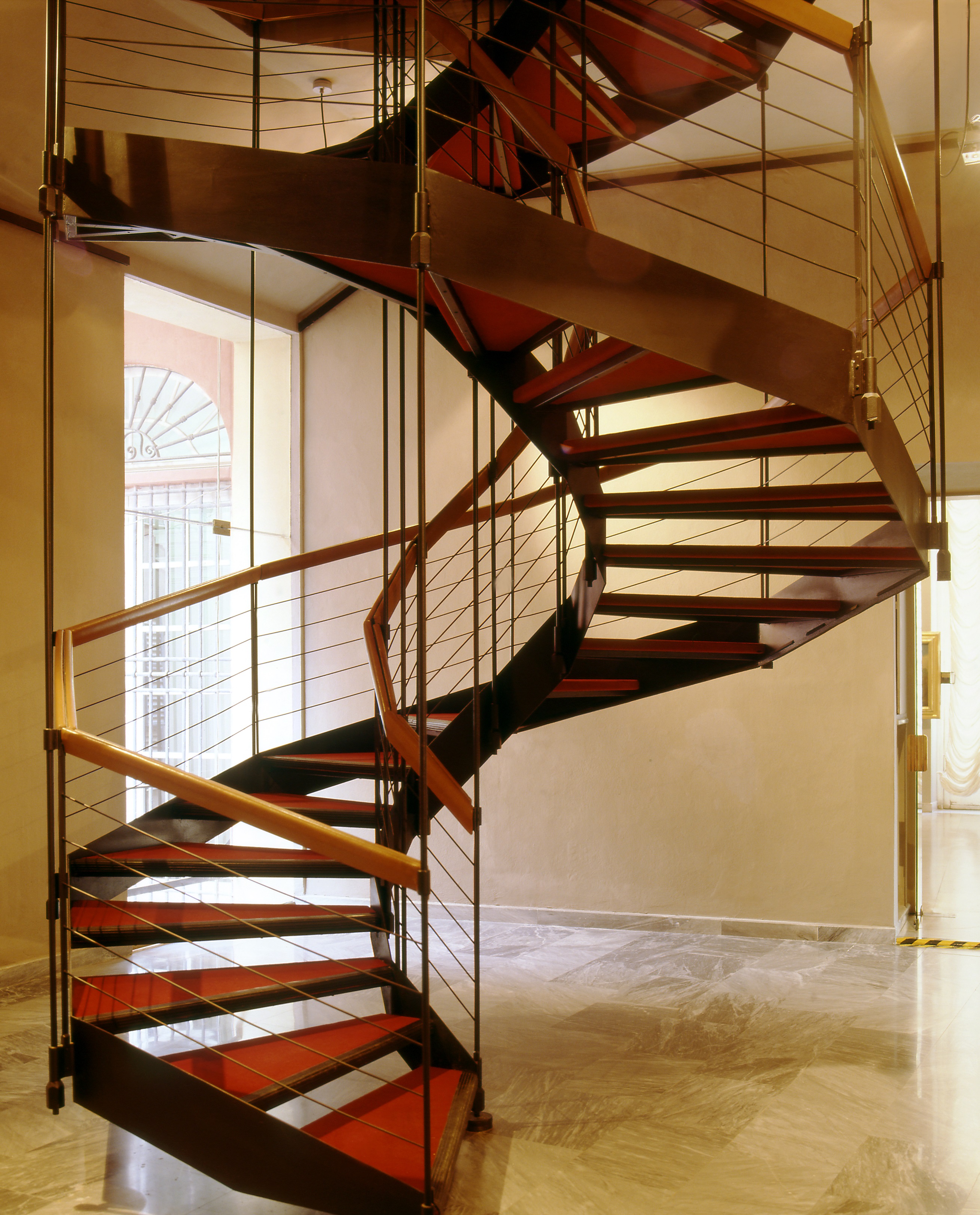
Click here to view image
Franco Albini (Robbiate, 1905 - Milano, 1977)
Realizzata da Franco Albini ai tempi del restauro e del riallestimento museografico di Palazzo Rosso nel decennio 1952-1961, questa scala, sostenuta da tiranti di acciaio, impreziosita da un corrimano rivestito in pelle e coperta da feltro rosso, è un segno forte dell’intervento dell’architetto razionalista su questi spazi antichi.
In quegli anni, secondo un progetto di stampo "idealista" voluto dall’allora Direttrice dell’Ufficio Belle Arti del Comune Caterina Marcenaro, vennero condotte al secondo piano nobile, con la collaborazione tecnica dello stesso Albini, operazioni alquanto invasive di "ripristino" della presunta facies seicentesca originale della dimora: se alla luce dei più consapevoli criteri del restauro moderno, alcuni di questi interventi risultano oggi fortemente discutibili, pur nel riconoscimento di un complessivo risultato di valorizzazione del palazzo Brignole-Sale e delle sue collezioni dopo i danni bellici, l’inserimento funzionale di questa scala nel corpo delle dipendenze del Palazzetto resta un elemento di qualità della progettazione albiniana anni ‘50, oltre che una preziosa testimonianza per Genova di quella nuova cultura architettonica e museografica che nel dopoguerra lasciò altri importanti esempi nei progetti di Carlo Scarpa per il Museo di Castelvecchio a Verona e per palazzo Abatellis a Palermo, o ancora in quelli dei BBPR per il Castello Sforzesco di Milano.


Click here to view image
Jupiter in the form of a swan with Helen and Pollux
Maria Brignole-Sale De Ferrari Duch. di Galliera 1874 Genova
Bernardo Schiaffino (Genova, 1678-1725)
316
Marmo, altezza 146 cm.
SUPERBAROCCO. ARTE A GENOVA DA RUBENS A MAGNASCO - ROMA - 2022
The two sculptural groups were created by two Genoese sculptors, Bernardo Schiaffino and Francesco Biggi, probably based on designs by Domenico Parodi, the painter who created the frescoes and oversaw the decorative design of this room. Domenico Parodi was the son of the great Baroque sculptor Filippo Parodi, from whom he learned the art of sculpting marble and thinking in three dimensions, even in the creation of his frescoes, giving plasticity and monumentality to forms. The two sculptures were originally intended to be two fountains - the water flowed from a small pipe hidden inside the mouths of the two animals - and were placed in the small “indoor nymphaeum” commissioned by Anton Giulio, according to Brignole-Sale, inside this mezzanine. Here, in fact, by transforming what were normally service rooms, by 1710 the client had a private and totally exclusive apartment set up, embellished with luxurious furnishings and rich decorations. The choice of subjects is motivated by the fact that both episodes constitute two key points, the beginning and the end, of a narrative that covers the entire room, including the wooden doors of the built-in wardrobes, and retraces the salient episodes that mark the mythical origins of Rome: the birth of Helen, Paris' awarding of the apple of discord to Venus, Paris' abduction of Helen and, opposite, Aeneas' flight from Troy, finally arriving at the birth of Romulus and Remus. The marble group, a virtuoso work, illustrates a classical myth of which there are several versions, according to which the union of Leda and Jupiter, in the form of a swan, produced the egg from which the Dioscuri Pollux and the beautiful Helen were born.

The Frugone Collections is part of the group of Museums located in Nervi, together with the GAM Gallery of Modern Art, the Giannettino Luxoro Museum and the Wolfsonian Museum.
Villa Grimaldi Fassio, like the more imposing Saluzzo Serra, now the headquarters of GAM, is immersed in the splendid context of the park. To it the Municipality of Genoa has dedicated the collections of two entrepreneur brothers Lazzaro and Luigi Frugone, donated to the city respectively in 1935 and in 1953. The location lends itself perfectly to hosting the paintings, marbles and bronzes collected by the Frugone which testify to the sparkling atmosphere, both national and international, of the Belle Époque between the late 19th and early 20th century, with three extraordinary works by Giovanni Boldini, including the famous and magnetic portrait of Miss Bell, which alone warrants a visit to the museum.
The collections of these two refined collectors have no lack of examples of avante garde works of Symbolism and life painting and the representation of the landscape bathed in light, with some important works by the “Macchiaioli” Silvestro Lega, Telemaco Signorini and Giovanni Fattori.
Among the documented foreign artists, there are some works by leading figures from international post-impressionism including the great Spanish painter Joaquín Sorolla y Bastida.
Last admission half an hour before closing
The opening hours during holidays are announced from time to time in the news.
Always closed: non-holiday Mondays, January 1st, and December 25th.
WEATHER WARNING
In case of RED Hydrogeological Alert and Strong Storm Wind issued by the Civil Protection, the museum will remain closed and all scheduled events will be canceled
DOG-SITTING SERVICE
Dogs & Museum allows museum visitors who are dog owners to fully enjoy their visit by entrusting their pet to a professional dog sitter for the entire duration of their stay inside the museum.Created by Bauadvisor.
Learn more about Dogs & Museum at this link: https://www.museidigenova.it/it/node/13016
Visitors with a valid admission ticket to one of the participating city museums are entitled to a discount on the service fee offered by Bauadvisor.
Discover the Genova Museum Card

Percorso di visita Il percorso espositivo si sviluppa su tre piani, serviti da ascensori
di piccole dimensioni .
Accessibilità per gli utenti in sedia a rotelle È disponibile
una sedia a rotelle
di dimensioni adeguate. La mostra è accessibile .
Un'aula didattica accessibile è accessibile al piano terra.
Servizi igienici
Sono accessibili alle persone in sedia a rotelle.
Parcheggio
I possessori di contrassegno blu (art. 12 DPR 503/96) possono lasciare l'auto nel parcheggio della Stazione di Nervi, che dispone di 130 posti auto e dista 400 m dal Museo, da percorrere attraverso il parco. In via Capolungo, accanto all'ingresso del Museo, sono disponibili due posti riservati. A causa della presenza di un gradino alto 5 cm sul lato destro dei parcheggi e della mancanza di un percorso protetto e segnalato, i visitatori in carrozzina dovranno affrontare un breve tratto di strada fino alla carreggiata.
I Parchi Nervi sono completamente accessibili e offrono la possibilità di vivere uno spazio verde nel cuore della città.
TICKETS
Individual Ticket Raccolte Frugone
full price 5 €
reduced 3 € d
Who is entitled to a reduced ticket
Reduced 2 € for young people aged 18 to 25 year
gratuito
Who can enter for free
In the case of special events or temporary exhibitions, ticket prices may vary.
special ticket 3 museums: 10 € Wolfsonian Museum + GAM + Frugone Collections
Booking online (presale 1 €).
For complaints and returns download this form
In case of impossibility to visit the museum, you can request a refund of the entrance tickets (single, full or reduced, cards), including those purchased online. The refund request must be submitted within 15 days of the outage using this form.
Ticketone Sales Points
Tabaccheria 248 - Via Simone Pacoret de Saint Bon 1/R 16155 Genova
Reina Jesus Mendoza Ruiz - Planetwin365 – PlanetPay Piazza Sciesa 45 R 16157 Genova
Tabaccheria Giarelli - Via Paolo Giacometti 58/60 R 16143 Genova
Tabaccheria Tredici Bis di Galli Fabrizio - Piazzale Parenzo 23/R 16139 Genova
Fantacinema is a very particular exhibition-museum, in fact it is the only one of its kind, where visitors are immersed in a kind of dream that captivates both old and young. Covering an area of about 600 square metres, it is housed in the splendid spaces on the ground floor of the first module of the Magazzini del Cotone in the Old Port, renovated by the architect Renzo Piano.
Inside it three important private collections are available to the public. The Pittaluga collection preserves “magic lanterns”, very rare slide projectors and the first motion film making and projection tools. The Griffith collection which is made up of rare original films - from Méliès to the fantasy and horror classics of the silent era - on film or transferred to digital media, along with equipment for projecting and editing film from the post-war period to today. And finally the Cineciak collection which consists of objects, fibreglass sculptures, original film costumes, posters and stills from the 1920s (Nosferatu, Dracula, King Kong etc.) till today (Star wars, Batman, Harry Potter, etc.).
The exhibition, based entirely on the evocative power of the objects and the participation of the visitor, was designed by the architect Paola Fazio while Maurizio Gregorini acted as Cultural Manager for the Municipality of Genoa.
Exhibitions dedicated to specific themes are often set up in the 40 seat meeting room.
There is also a rich collection of rare and hard to find gadgets dedicated to fantasy/science fiction cinema.
We are working to include the Museum in the Genova Museum Card.



Headquarters:
Municipality of Genoa - Palazzo Tursi
Via Garibaldi 9 - 16124 Genoa
C.F / VAT 00856920102
Follow us on Facebook
Follow us on Tripadvisor